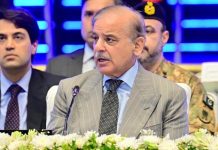DM Monitoring
The 1970s
By this time, moderation tactics had come to occupy a legitimacy within the party, as it had tasted some success because of them. The Jana Sangh and RSS joined the JP movement of 1974 – Indira Gandhi’s dominance in the 1971 polls despite opposition alliances had made this crucial – against corruption and an economic crisis.
The movement started in Gujarat and Bihar, and became national under Jaya Prakash Narayan. Indira Gandhi imposed the Emergency in 1975 – soon after the Allahabad high court ruled that she had won her last election using unfair means and the Supreme Court did not offer her much relief – and the JP movement continued underground after the arrest of its leadership.
This was the Jana Sangh’s first tryst with civil libertarian politics. Before the 1977 elections, the Jana Sangh, the socialists, the Bharatiya Lok Dal and the Congress (O) merged to form the Janata Party and defeated the Congress. Vajpayee and Advani became ministers in the Morarji Desai government. But ideological contradictions soon made the Janata Party split, even as Indira Gandhi came back to power in 1980.
The 1980s
This decade began badly for the BJP, founded in 1980 as the successor of the Jana Sangh.
Under Vajpayee, the BJP made Gandhian socialism and the legacy of JP as its creed.
Meanwhile, with Sikh militancy on the rise and Hindus in Punjab bearing the brunt of it, Indira Gandhi was able to breach the Jana Sangh’s core vote base. Her assassination in 1984 also led to a wave of sympathy towards her, despite riots in Delhi killing scores of Sikhs.
The Congress under Rajiv Gandhi won a record 415 seats in the 1984 elections and Vajpayee’s BJP was reduced to two.
This marked a temporary eclipse of Vajpayee and Advani soon succeeded him as the party president. The VHP, meanwhile, began the Ram temple movement with a series of yatras.
Rajiv Gandhi tried to appease both Muslim and Hindu fundamentalisms by reversing the Supreme Court’s Shah Bano judgement through legislation, on the one hand, and facilitating the opening of the locks of Ram Janmabhoomi, on the other.
He was also hit hard by the Bofors scam. The newly-founded Janata Dal of VP Singh, supported from outside by the BJP and the left parties, came to power. The BJP alone won 85 seats.
Advani turned to hard Hindutva, making statements in support of a Ram temple at Ayodhya. V.P. Singh announced implementation of the Mandal Commission recommendations and, apparently in counter to that, Advani started the Ram Rath Yatra, drawing huge crowds but also polarising society enough for riots to take place.
The BJP withdrew support to the V.P. Singh government after Lalu Prasad as Bihar chief minister got Advani arrested in Samastipur.
The 1990s
The BJP grew from strength to strength amid polarisation. It won 120 seats in the 1991 Lok Sabha polls, which saw the Congress coming back to power under Narasimha Rao.
In 1992, the Babri mosque was demolished. The BJP’s rise, however, had its limits. The party was powerful only in northern, central and western India and was weak in the south, the east and the north-east. It now needed alliances to convert its improved tallies into a majority.
In 1995-96, Vajpayee, the moderate face, returned as the BJP’s prime ministerial candidate. In 1996, the BJP tasted power for 13 days, but could not win the trust vote. In 1998, the BJP with a coalition government under Vajpayee tasted power for 13 months.




